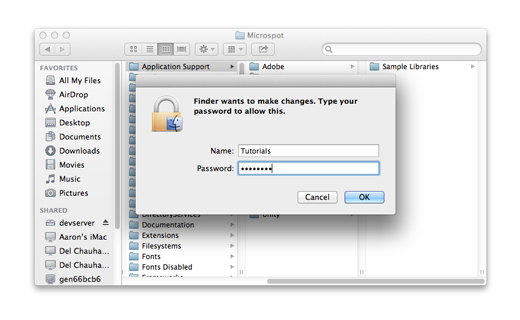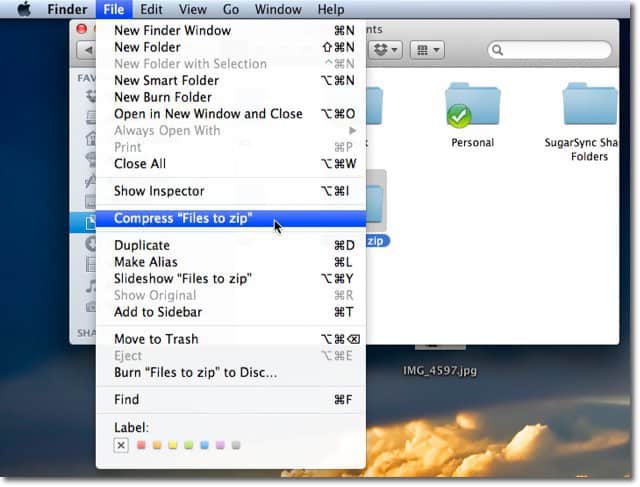- Extract All Files From Folders
- How Do I Extract Files From Multiple Folders On A Mac
- Extract Files From Multiple Folders Mac
- Mass Extract Files From Folders
Convenient though the Mac’s folder structure can be, there may be times when you’ve buried files within so many layers of folders that they’re no longer easy to find or deal with. For instance, you might have a decade’s worth of tax documents or a nest of old photos and notes. Although you could manually wade through those folders to bring your files to the surface, with an Automator application you can do it all with a simple drag and drop. Here’s how:
When the new dialog pop-ups, Drag and drop the WinZip icon to the Applications folder to install Winzip software on your Mac. All required files will be copied and you are now ready to use the tool. Step 3: Extract RAR file. In order to extract a RAR file using WinZip, double click on the RAR file or right-click on it and open with WinZip. Select Multiple Non- Consecutive Files on Mac. If the files are not in consecutive order then select the first group by clicking on the first file and after that hold down the Shift button while clicking on the last one in that group. Now, press command key and click on the first image in the second group. Next press Shift and click on the last. One way to do that is with a simple search. Go to the Attachments folder in the Finder. Then Command+f to search. At the top you should see “Search:” and then “This Mac” and “Attachments.” Make sure you select the latter so you are just searching in this folder. Then enter some search criteria that will get you everything you want. 1 - Open the main top level folder. 2 - In the search box, type a single asterisk (. ) which will cause all files from that point downward (in any subfolder) to show up in the search results, regardless of which folder they are in. 3 - Drag all the search result files to their new home. You can filter by file type too. It’s generally good practice to avoid hard-coding file and folder paths in a script. Prompting the user to select files and folders makes for a more dynamic script that won’t break when paths change. Prompting for a File. Use the Standard Additions scripting addition’s choose file command to prompt the user to select a file.
Set up your workflow
Extract All Files From Folders
Launch Automator (/Applications) and in the template chooser that appears, select Application. Add these actions to your workflow in order: Set Value of Variable (found under the Utilities heading), Get Folder Contents (under Files & Folders heading), Filter Finder Items (Files & Folders), Move Finder Items (Files & Folders), Get Value of Variable (Utilities), Get Folder Contents (Files & Folders), Filter Finder Items (Files & Folders), and Move Finder Items to Trash (Files & Folders).
Select the first action—Set Value of Variable—and choose New Variable from the Variable pop-up menu. In the resulting Variable Options window enter an intuitive name such as hostFolder and click Done. Within Automator choose View -> Variables. Your hostFolder variable should appear in the list of variables at the bottom of the workflow.
In the second action—Get Folder Contents—enable the Repeat For Each Subfolder Found option. Configure the following Filter Finder Items action to read Kind Is Not Folder. In the next action—Move Finder Items—drag the hostFolder variable from the variables list at bottom of the workflow to the To pop-up menu so that its name appears in the pop-up menu. Enable the Replacing Existing Files option in this action. Leave the next Get Folder Contents action as it is—without the Repeat for Each Subfolder Found option checked. Configure the next Filter Finder Items action to read Kind is Folder. And finally, leave the Move Finder Items to Trash action alone. Name your workflow something like “Subfolder Zapper” and save it to the Desktop.
Put it to work
When you drag a folder on to this workflow applet, all items buried in folders within that folder will be placed at the root level of the folder you dragged. So, for example, if you drag Folder A—which contains Folders B, C, and D—to the workflow, the files within those folders (and the contents of the folders within these folders) will move to Folder A. The workflow then goes on to delete the empty Folders B, C, and D.
Note that the workflow functions properly only if you drag one folder to the applet at a time. Additionally, be warned that if you have files with duplicate names, the duplicate files will be deleted.
Email attachments play a vital role in every email client application, be it Outlook 365 or any other, specially when the data is in the form of images, videos, PDF files, or other items. Now many users remain confused over the task to export these attached files to their local storage. Keeping that in mind, we are going to describe a step by step tutorial on how to download attachments from multiple emails in Office 365 mailbox to local storage.
Now, saving every attached file to desktop can be a tedious task, wasting hell lot of time. So let’s analyze how to download attachments from Outlook Office 365 in a really short time span.
Also Read: Top 3 Ways to Extract Attachments from Outlook PST Emails
So let’s get started!
First let’s start with the manual steps:

Download Attachments from Office 365 Manually
So, for the case when you are getting an email containing multiple attachments, here is how you can download attachment from Outlook 365 to a single folder on your local storage:
- Open your Outlook 365 mailbox.
- You will find a “Download All” option (link) around the attachments, which will export a zip file of the attached files. (You will find this ZIP file in the Downloads folder.)
- Now click on File and then click Save Attachments option.
- Under Save All Attachments, select the data items you desire to save.
- Tap on the Ctrl key and hold long to add or remove selective data items.
- Tap on the Shift key and hold long to choose multiple attachments in your list.
5. Click on OK.
6. Choose the desired folder to save the files >> Click OK.
Download All Attachments from Office 365 for Mac
- Go to your Outlook 365 Inbox.
- Select the attached file that you want to download and right-click >> click on Save All (Or you can press Shift+Command+E on your keyboard as a short-cut)
- Now click on Save All Attachments option.
- Navigate to the desired location >> click Choose
- Now open the email containing desired attached files >> click on the Preview option
- Now select the files that you want to download.
- Click right on any email >> SaveAs >> select the desired location for the file.
- Click on Choose.
What if there are Bulk Emails containing multiple attachments and you can’t download attachments from Office 365 with above steps?
Quick Solution to Download Attachments from Multiple Emails in Office 365 (Recommended)
The above manual steps were to download multiple attachments from a single email in Outlook 365. If users have bulk emails and want to download attachments from multiple emails in Office 365 quickly, then as a safe and instant solution, Outlook Attachment Extractor is highly recommended.
The software to automatically download attachments from Outlook 365 reduces the manual task by 90% and takes the lead to download attachments from Office 365 without any hassle.
Here are the four simple steps to download attachments from Office 365

Step 1: First, download and install the software
Step 2: Now, select Auto-Locate Mac Outlook 2019/2016/Office 365 Profiles or Mac Outlook 2011 Identities option
Step 3: Choose the destination location to save the resultant attachment files
Step 4: At last, click on the Export button to start the process.
The software is also available for Windows versions to download attachments from Office 365
Here is the demo version of the software that provides you the facility to download the first 25 email attachments from your Office 365 account.
How Do I Extract Files From Multiple Folders On A Mac
Moreover, if you want to create a backup all your Office 365 data, then you can try PCVita Office 365 Backup this tool is capable to take backup of Office 365 entire data along with emails, contacts, calendars, and other data items in bulk. The tool provides the facility to save email messages into PST and EML file formats on your desktop.
Furthermore, you can restore the locally saved PST file to Office 365 mailbox with the help of the Restore option provided by the O365 Backup & Restore software.
Extract Files From Multiple Folders Mac
Bottom Line
Mass Extract Files From Folders
Although users can use both manual steps as well as automated solution to download attachments from multiple emails in Office 365. But in situations where the user is unable to download attachments from Office 365 due to very huge data, we would recommend to use the automated software as it will avoid the data loss fears and quickly export Outlook 365 attached files to your local storage.